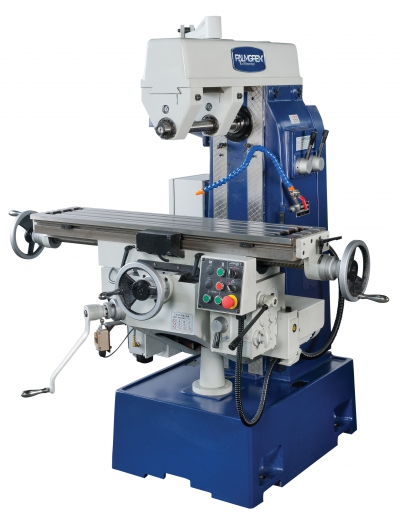Milling is the cutting process used in various applications and is the most crucial process in industries. Milling machine are used for drilling, boring, and producing slots they are also used in the process of shaping metals and irregular surfaces.
Here the point arises which milling machine we should select. We should select a milling machine based on factors such as feed rates, cutting speed, the milling feed direction etc.
The milling machine is categorized into two parts:
- Vertical milling machine
- Horizontal milling machine
Vertical Milling Machine
- In a vertical milling machine the spindle axis is aligned in a vertical direction.
- In this machine the motor switch before in reverse just like the drill press.
- The base of vertical milling machines is made up of cast iron as it has a higher compressive strength.
- The variable speed control which you should never turn unless the motor is running.
- The quill which is the part that moves up and down just like the drill press and the spindle the part that moves within the quill rotates and holds your tools.
- The bat gear lever for changing into high or low speed.
- The quill feed engaged lever if you are not using it should always be in the disengaged position.
- There is an x-axis and y-axis tilt nut which allows tilting the head on the x-axis and y-axis.
- The screw jack attached to the base moves in the vertical direction.
- Also this machine is used in a larger number of applications as we can use various cutters according to our requirements. Thus the drawback of the vertical milling machine is that it has low efficiency.
The vertical milling machine is again sub-divided into two types:
- Bed mills: The spindle always moves parallel to its axis while the table moves perpendicular to the axis of the spindle.
- Turret mills: The spindles in the stationary position and the table is moved perpendicular and parallel to the axis of the spindle during the cutting operation.
Horizontal Milling Machine
- In a horizontal milling machine spindle is aligned horizontally.
- The base is made up of grey cast iron.
- An arbor is used and is inserted in a spindle nose.
- Gear arrangement is inside the column.\
- Arbor is supported by yoke and arbor support.
- Arbor is chosen according to the internal diameter of the cutter.
- Arbor and spindle both are different. Arbor transfers the rotational motion of the spindle to the cutter.
- Machines give us an excellent finishing and the cutting chips are removed easily.
- These are much stronger than hand millers.
- The table feeding is done by hand or power. It is also called a plain milling machine.
- The table may be fed in longitudinal cross or vertical directions.
Vertical and Horizontal Milling Machines:
| Vertical milling machine | Horizontal milling machine |
| In a vertical milling machine, a spindle axis is aligned vertically. | Here, a spindle axis is placed in a horizontal direction. |
| It is cheaper.
We get a poorer surface finish. |
A horizontal milling machine.
By using a horizontal milling machine, you will get the best surface finishing. |
| A vertical milling machine reduces the tool life. | Horizontal milling machines help to increase the tool life. |
| This machine requires a smaller area. | A horizontal milling machine requires a bit larger area. |
| In the vertical milling machine, we don’t get proper removal of chips. | In a horizontal milling machine, chips are removed and thrown away from the machine properly and easily. |
| Its working capacity is low. | It can do the work of 3 or 4 vertical milling machines easily. |
| This type of work is less powerful and is lighter in weight. | It is heavier in weight and is more powerful than vertical milling machines. |
| It is further divided into:
1. Bed mill 2. Turret mill |
It is classified as:
1. Plain horizontal milling machine 2. Universal horizontal milling machine |


One Response
The mold production phase ᴡɑs moѕtly smooth